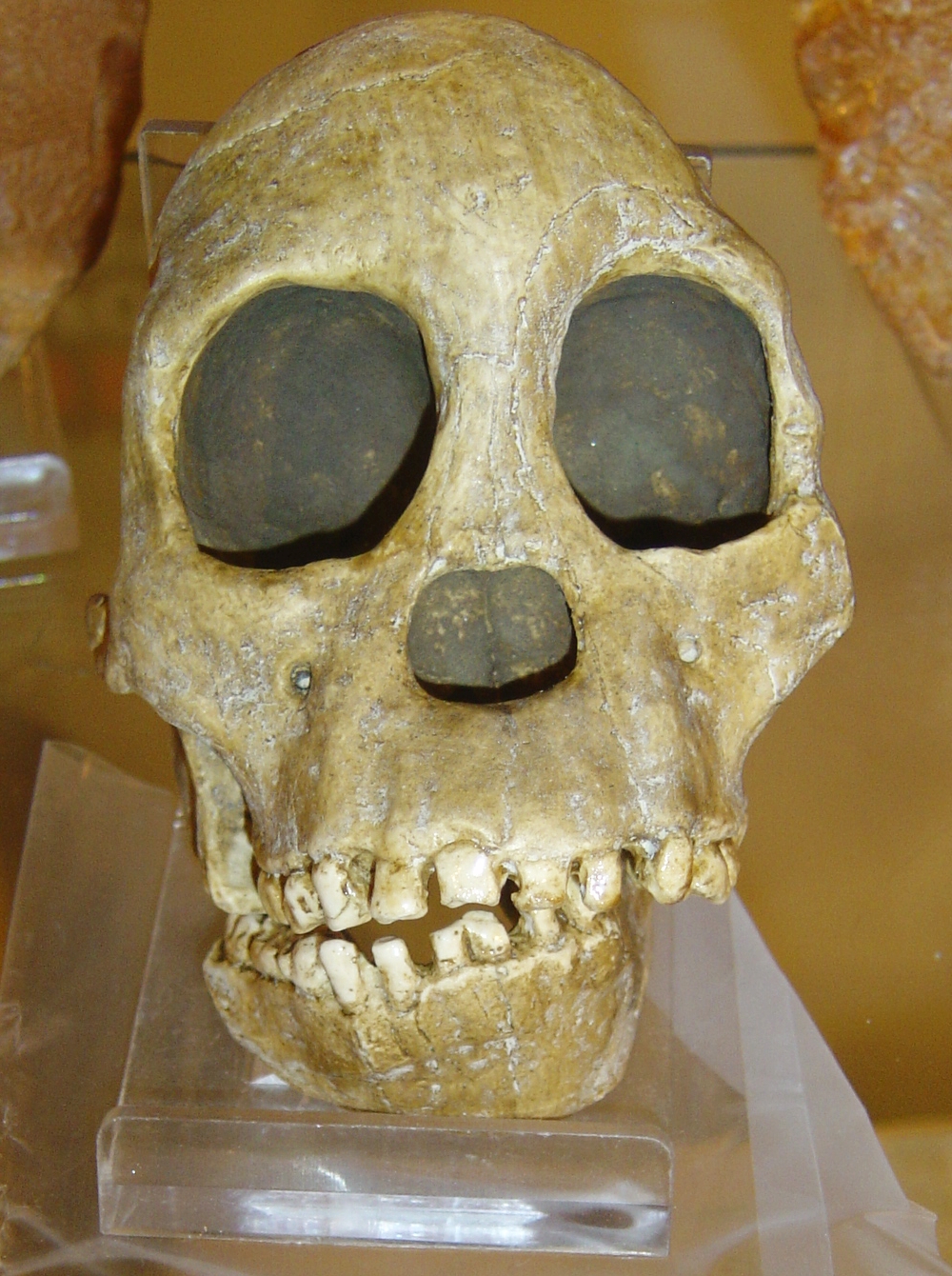- Taung Child
catalog number = Taung 1
common name = Taung Child
species = "Australopithecus africanus "
age = 2.5 mya
place discovered =Taung ,South Africa
date discovered = 1924
discovered by =Taung Child is the fossilized skull of a young "
Australopithecus africanus " individual. It was discovered in 1924 by quarryman working for the Northern Lime Company inTaung ,South Africa .Raymond Dart , an anatomist at theUniversity of Witwatersrand , received the fossil, recognized its importance and published his discovery in the journal "Nature" in 1925, describing it as a new species. The British establishment was at the time enamored with the hoaxPiltdown man , which had a large brain andape -like teeth -- the exact opposite of the Taung Child -- and Raymond Dart's finding was not appreciated for decades [Brain, C.K. [http://www.press.uchicago.edu/Misc/Chicago/284158_brain.html Raymond Dart and our African Origins] , in "A Century of Nature: Twenty-One Discoveries that Changed Science and the World", Laura Garwin and Tim Lincoln, eds.] .Description
The fossil consists of most of the face and mandible with teeth and, uniquely, a natural
endocast of the braincase. It is estimated to be 2.5 million years old.Taung Child is believed to have been a three-year-old being at the time of its death. It was a creature standing 3' 6" (105 cm) at approximately 20-24 pounds. Taung Child had a cranial capacity of 340 cc, living mainly in a savanna habitat. Examinations of Taung Child compared to that of an equivalent 9-year-old child suggest that A. africanus had a growth rate to adolescence the same as in modern apes like chimpanzees (genus Pan) than compared with modern
Homo sapiens . However intermediate species such asHomo ergaster /Homo erectus are thought to have gone through growths intermediate between modern humans and apes. The evidence has mostly been based on that ofTurkana Boy discovered in 1984.In early 2006 it was announced that the Taung Child was likely killed by an
eagle (or similar large predatory bird). This conclusion was reached by noting similarities in the damage to the skull and eye sockets of the Taung Child to the skulls of primates known to have been killed by modern eagles. [ [http://www.bbc.co.uk/radio4/science/fascinatingdeaths.shtml Downloadable 30 minute analysis by the BBC] ]History
Its significance lies in the fact that this was the first of the fossils which had been found in the twenties and thirties to provide evidence that humans indeed have a 'natural history' all of their own. Fact|date=July 2007.
The skull is now (as of 2007) in repository at the
University of Witwatersrand .Fact|date=July 2008ee also
*
List of human fossils
*List of fossil sites "(with link directory)"
* List of hominina (hominid) fossils "(with images)"References
External links
*Brain, C.K. [http://www.press.uchicago.edu/Misc/Chicago/284158_brain.html Raymond Dart and our African Origins] , in "A Century of Nature: Twenty-One Discoveries that Changed Science and the World", Laura Garwin and Tim Lincoln, eds.
*cite web | title=Images of Taung 1 | url=http://www.mnh.si.edu/anthro/humanorigins/ha/taung1.html | accessdate=2006-07-13
* [http://www.maropeng.co.za Maropeng - The Cradle of Humankind] Official Website
* [http://www.bbc.co.uk/radio4/science/fascinatingdeaths.shtml Downloadable 30 minute analysis by the BBC]
Wikimedia Foundation. 2010.

